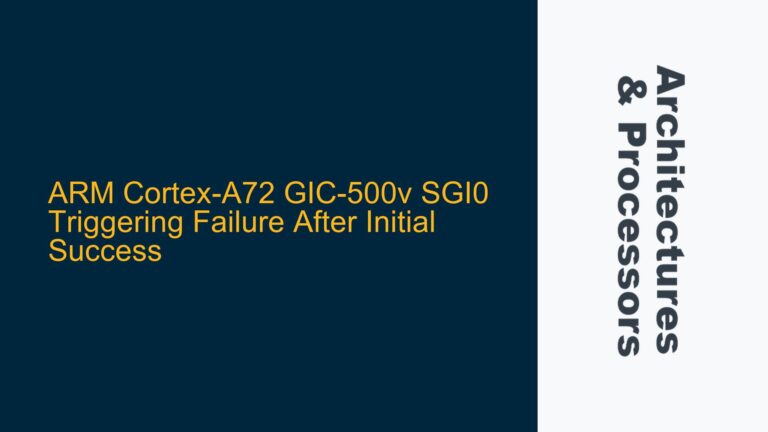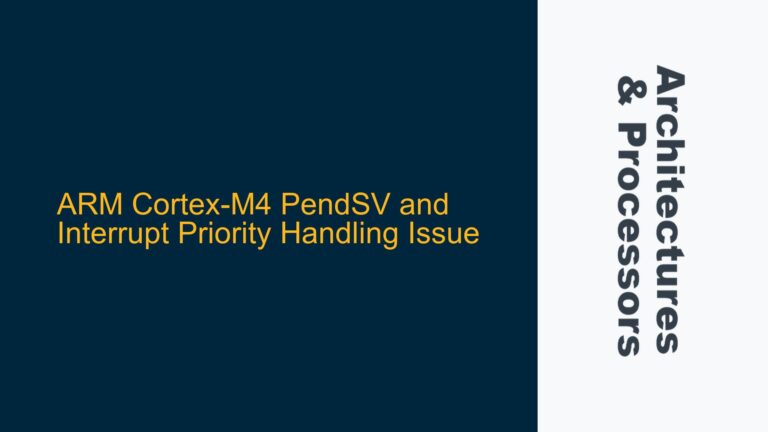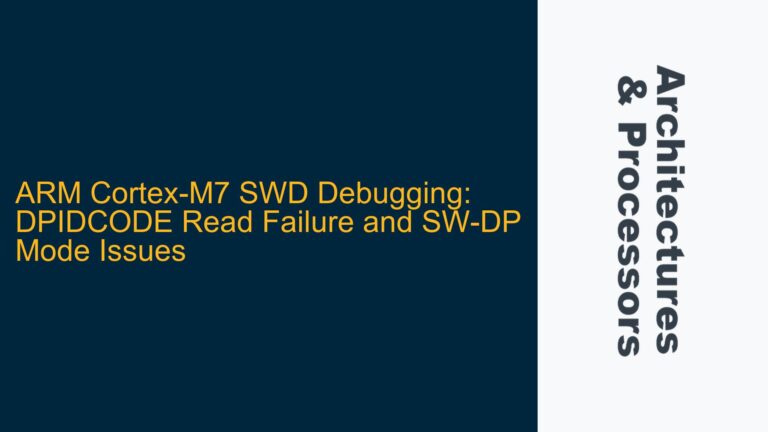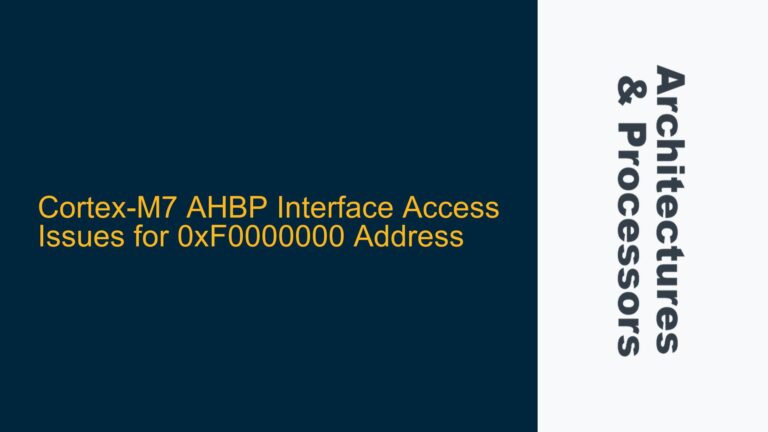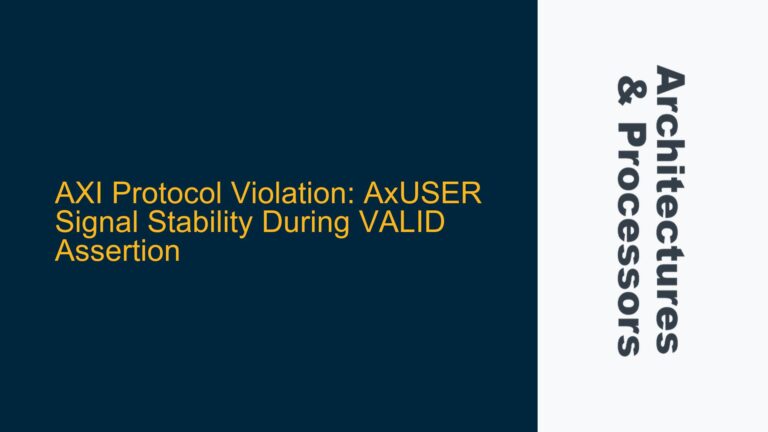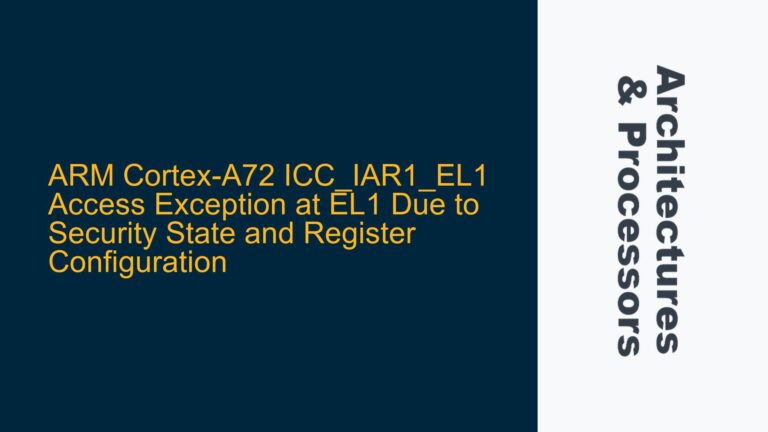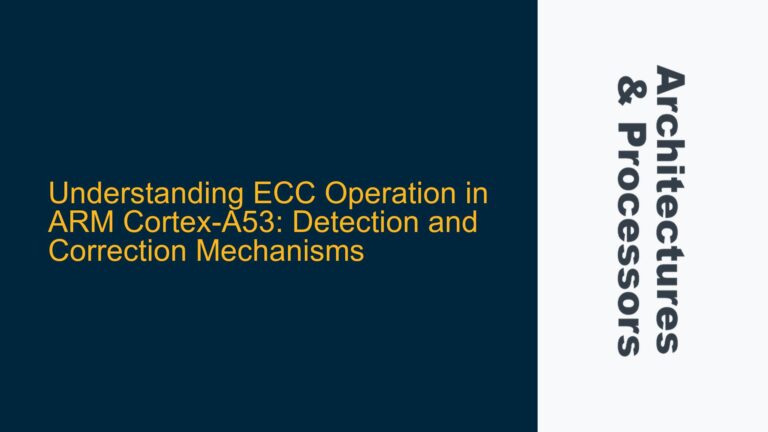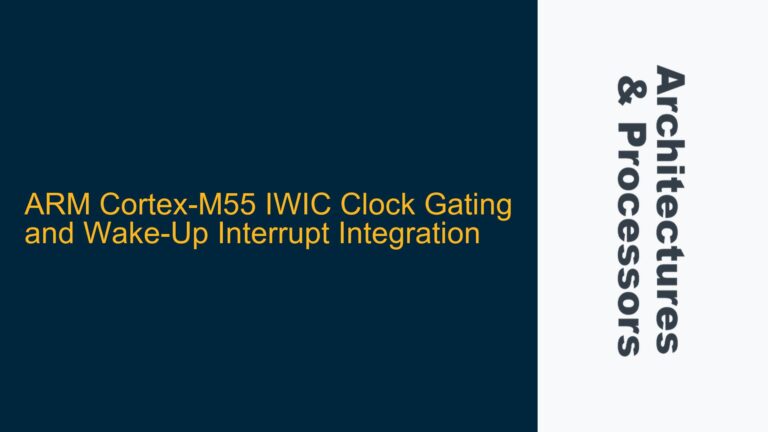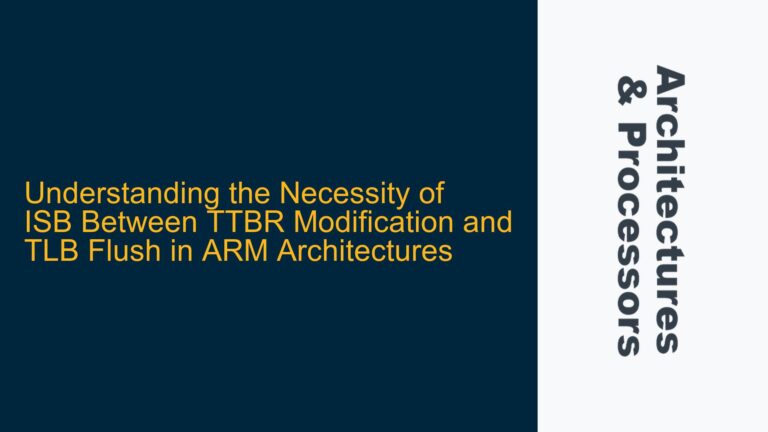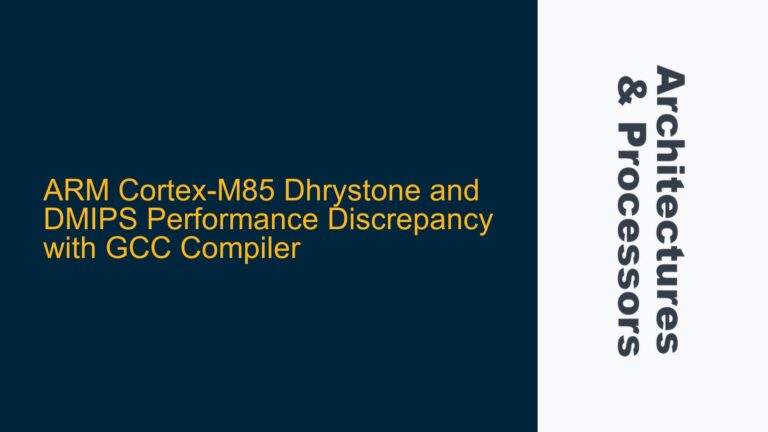ARM Cortex-A72 GIC-500v SGI0 Triggering Failure After Initial Success
ARM Cortex-A72 SGI0 Interrupt Handling and Group Configuration Mismatch The issue at hand involves the failure of Software Generated Interrupts (SGIs) to trigger a second time on an ARM Cortex-A72 processor using the GIC-500v interrupt controller. The initial setup and triggering of SGIs (SGI0 to SGI15) work correctly, but subsequent attempts to trigger any SGI…
